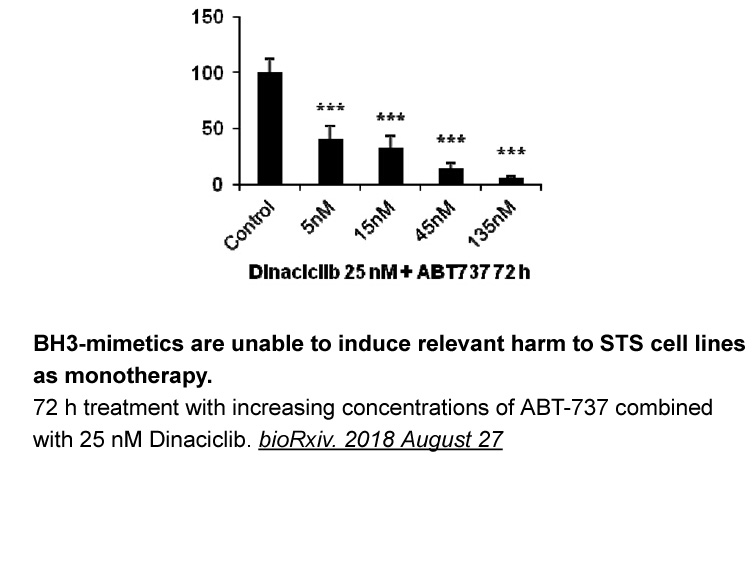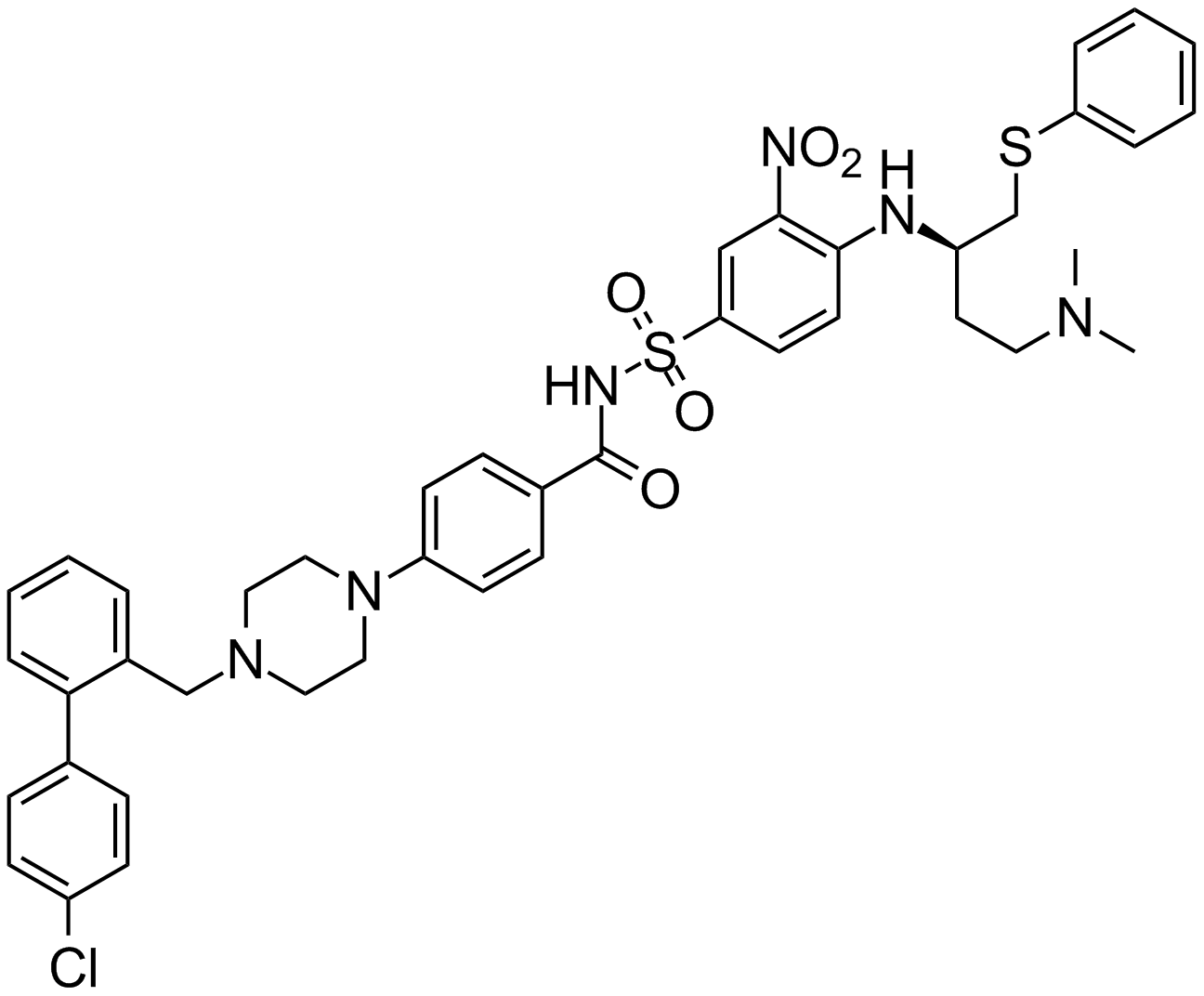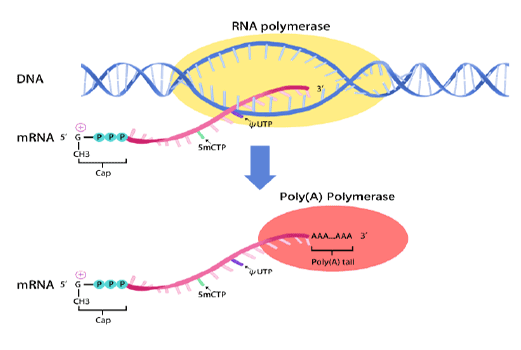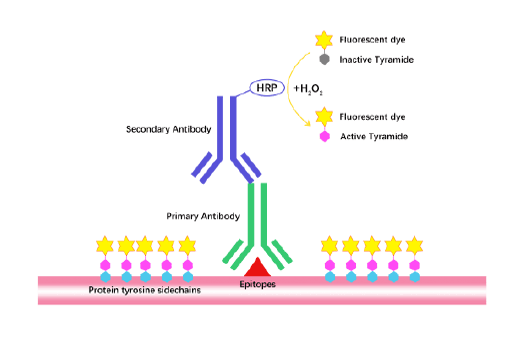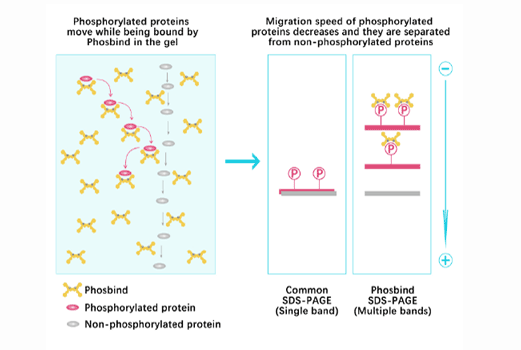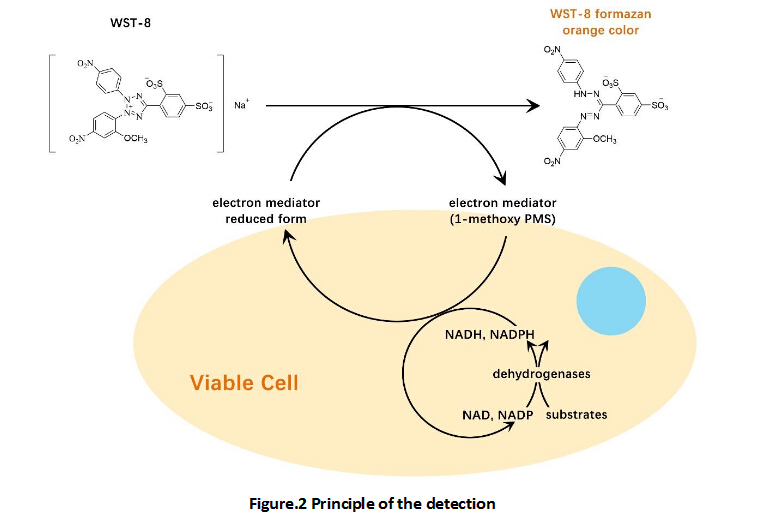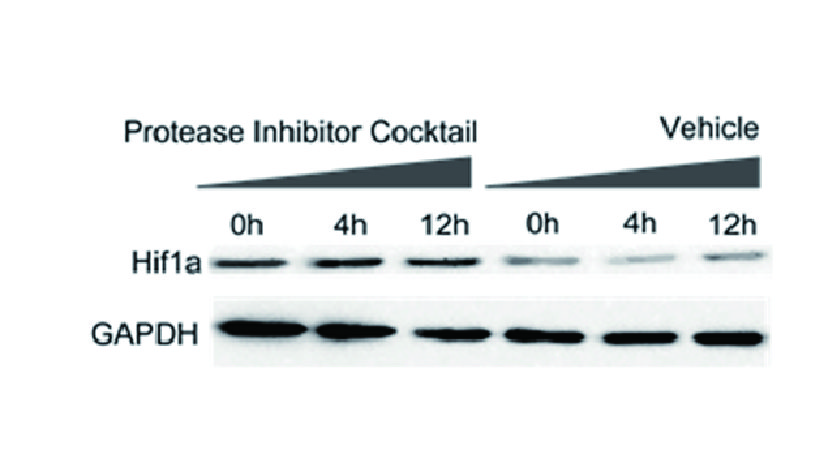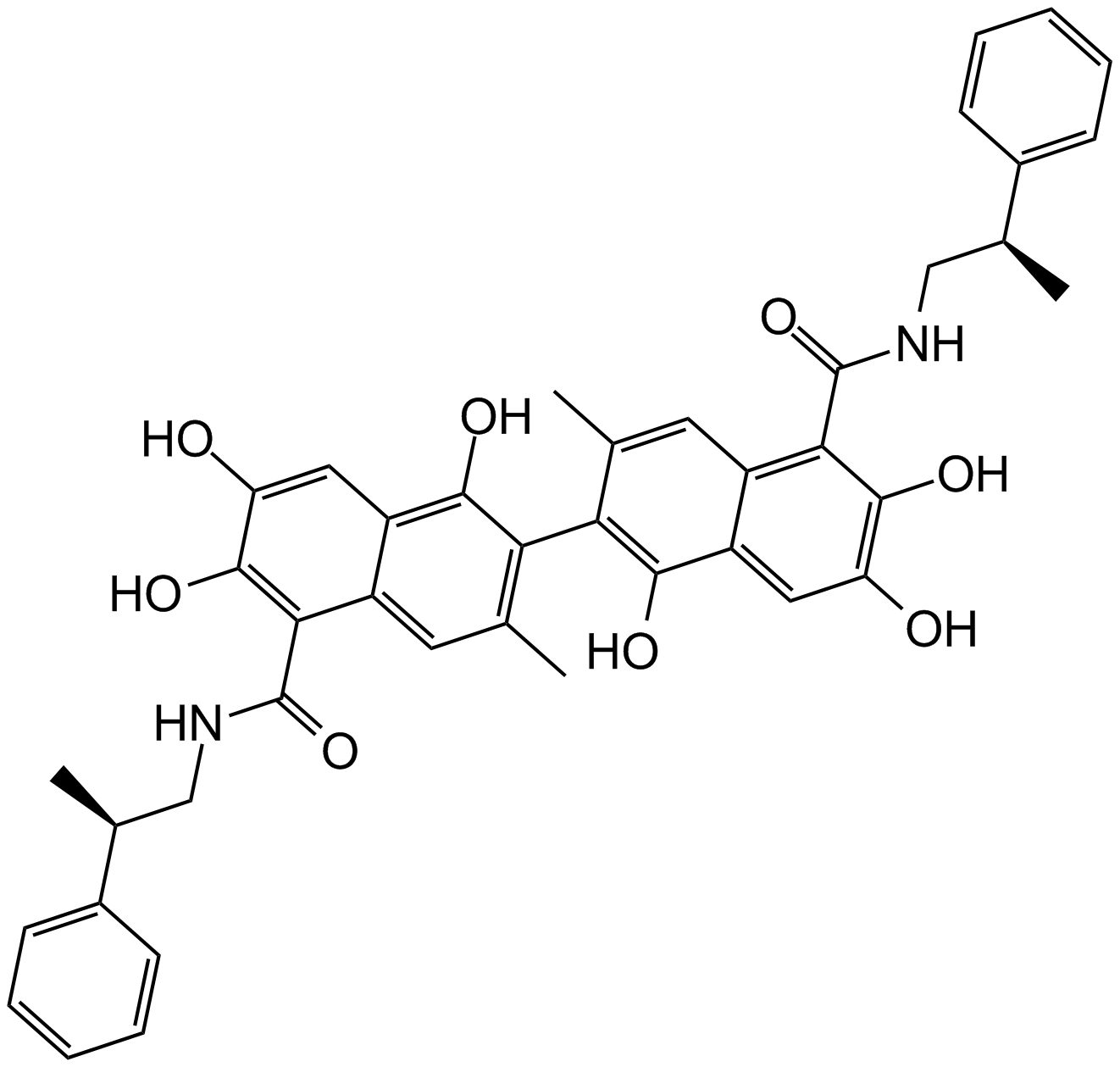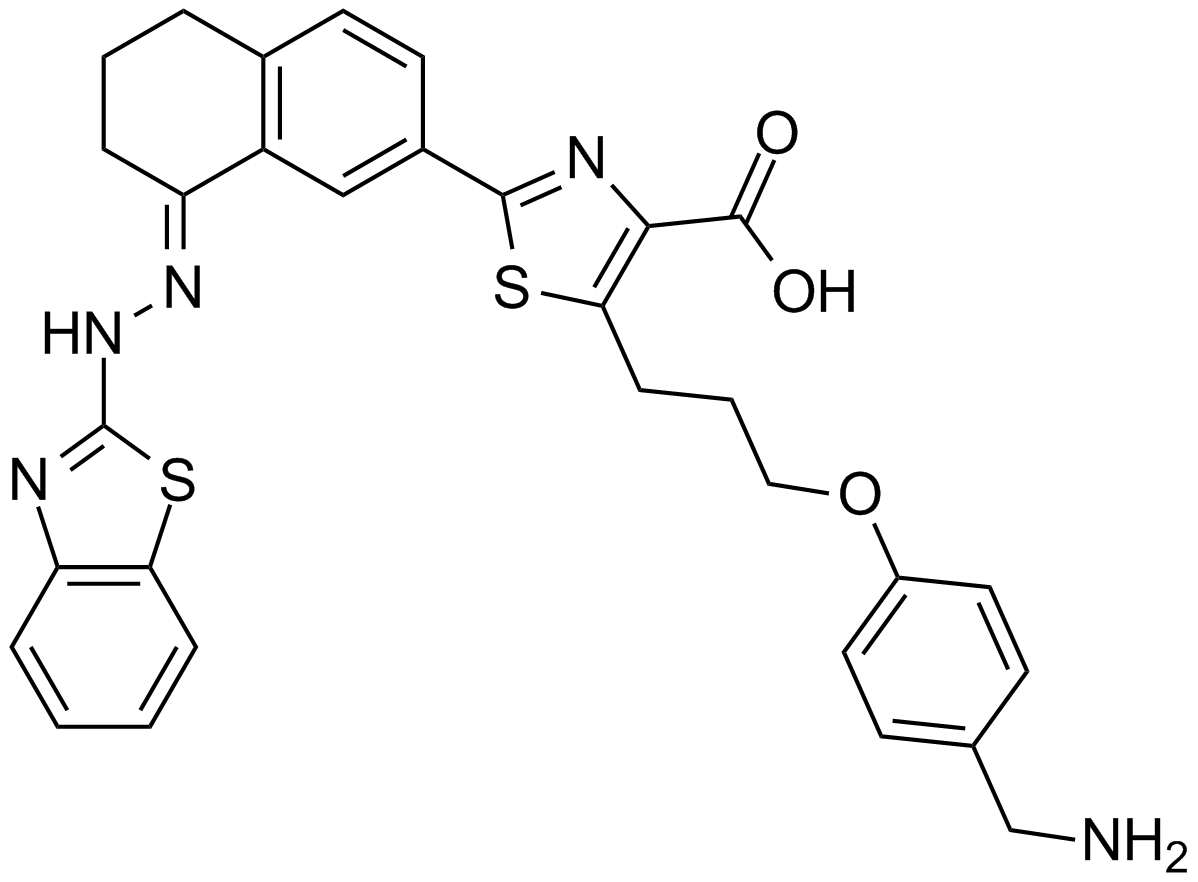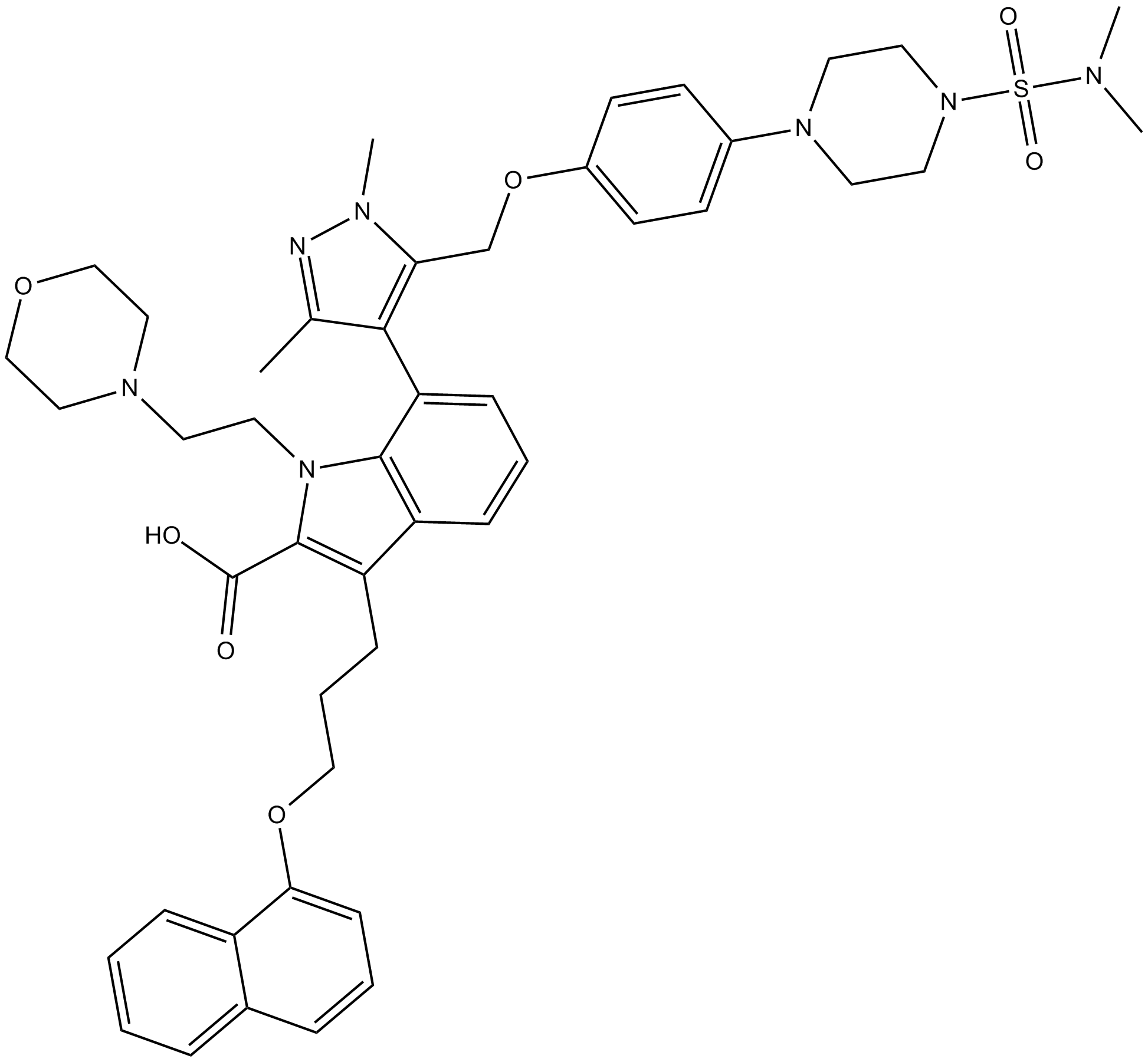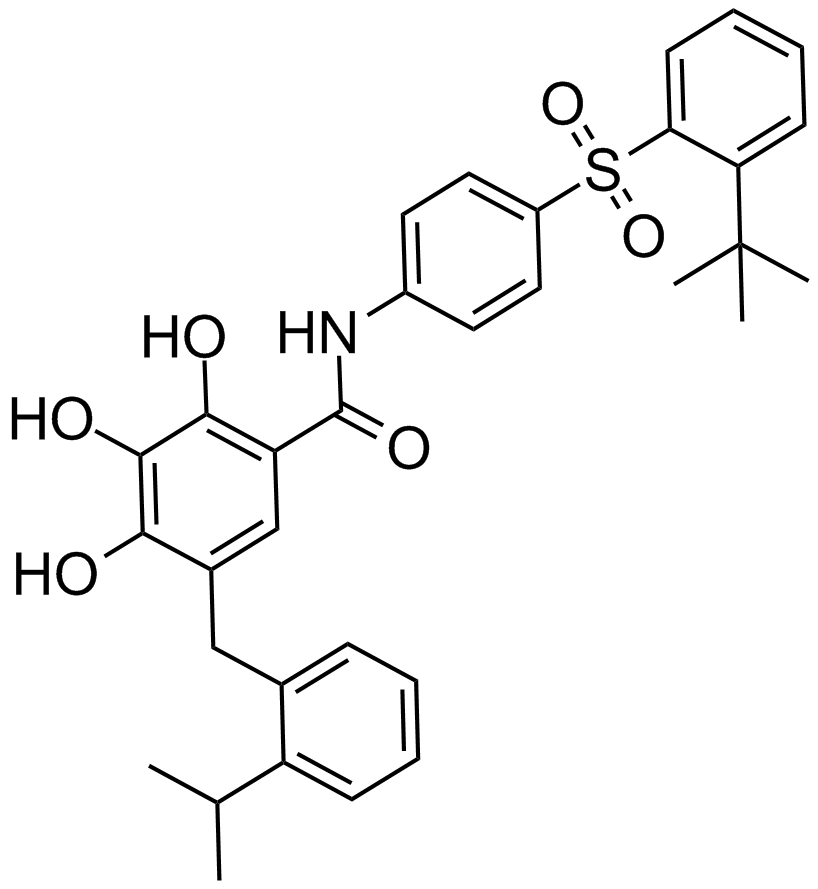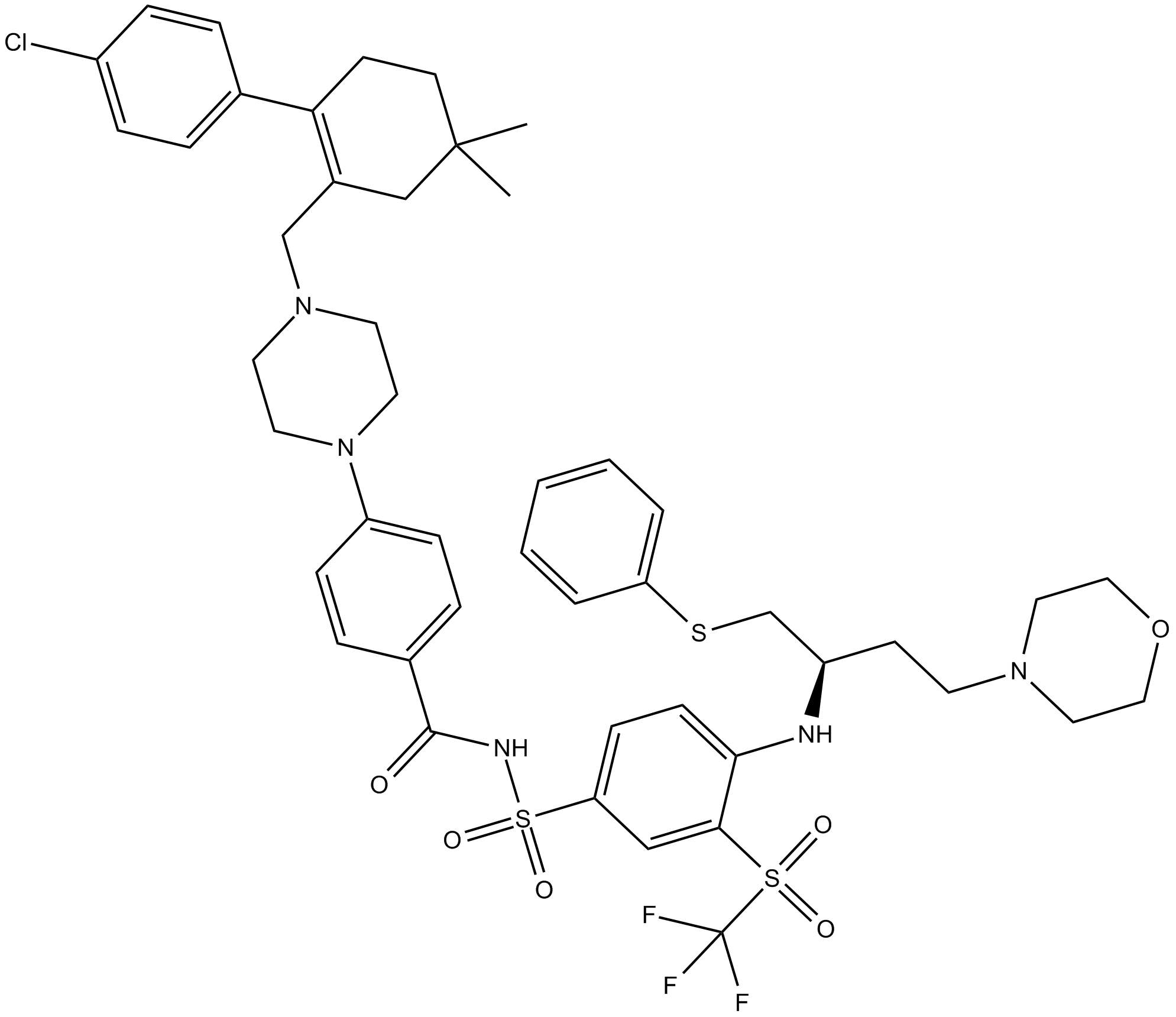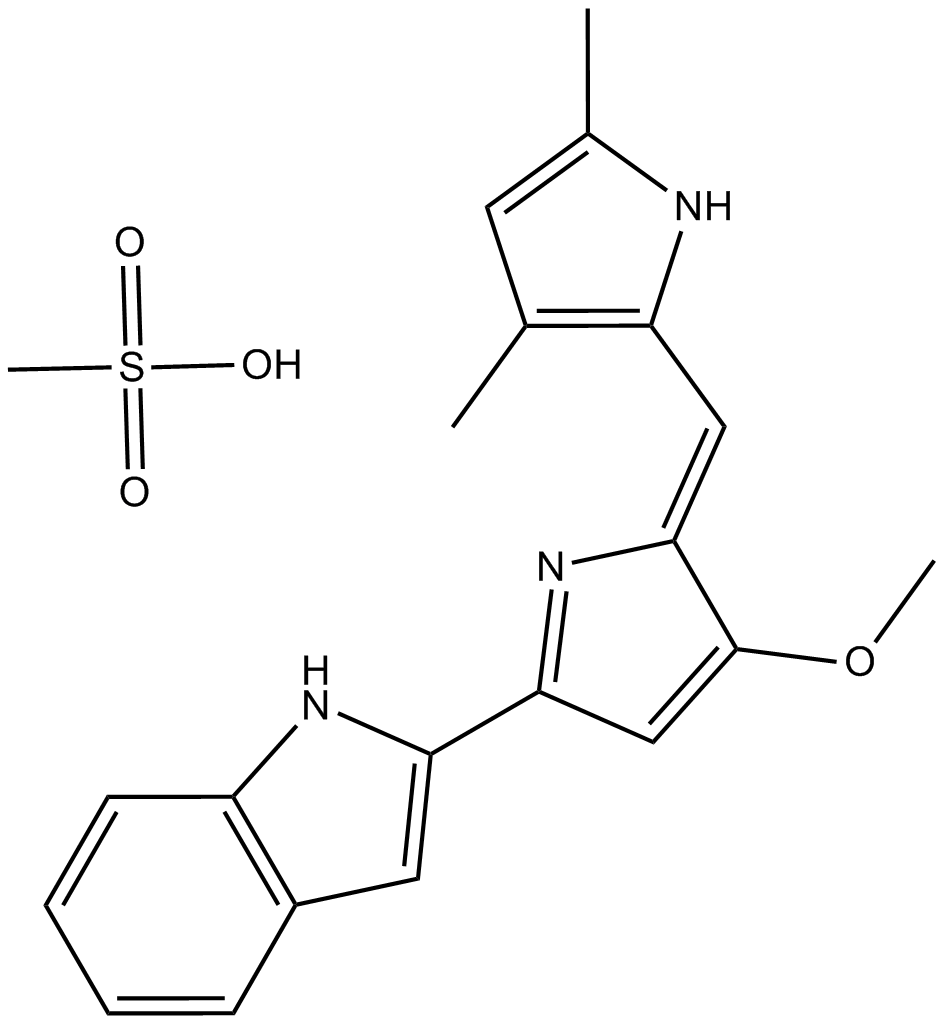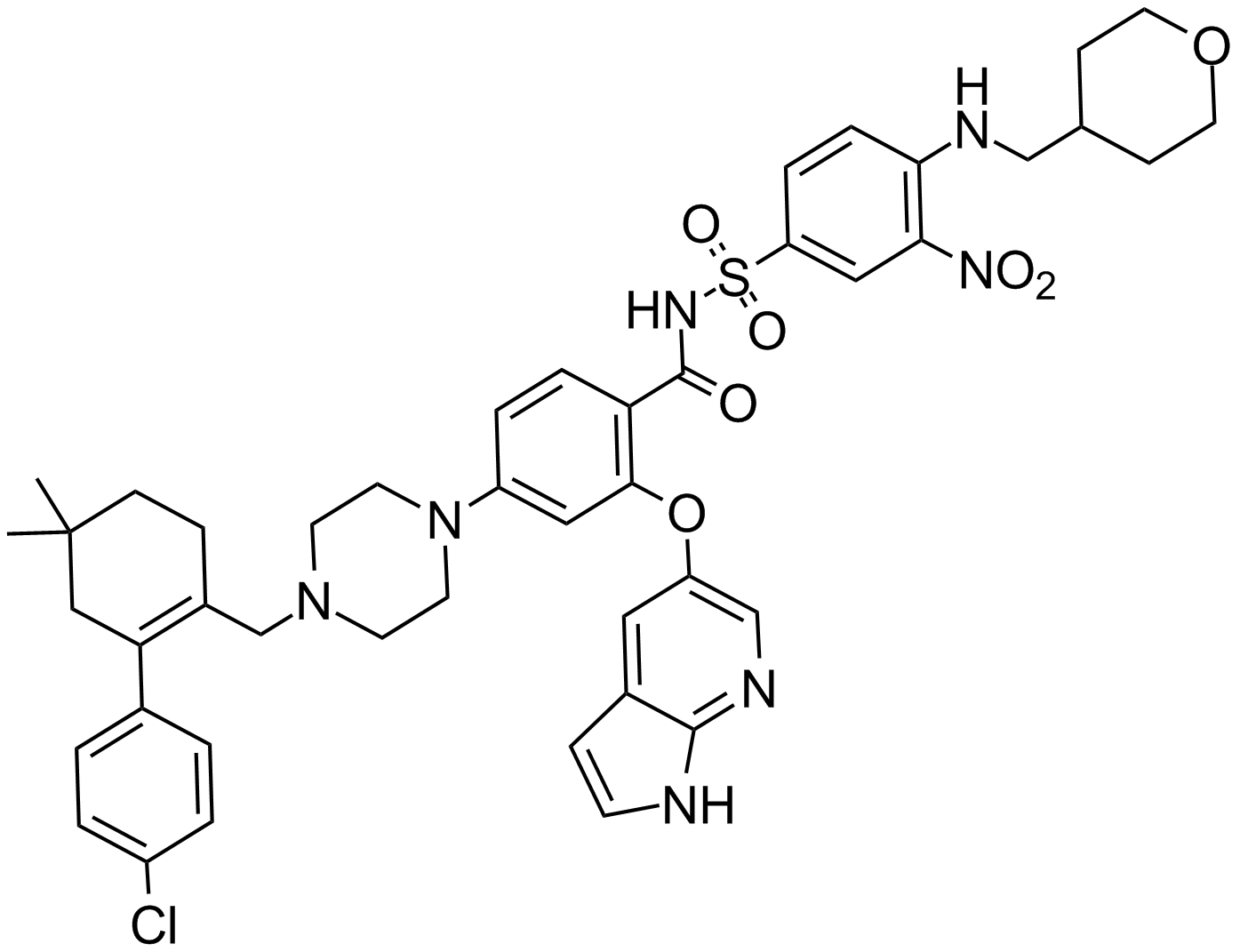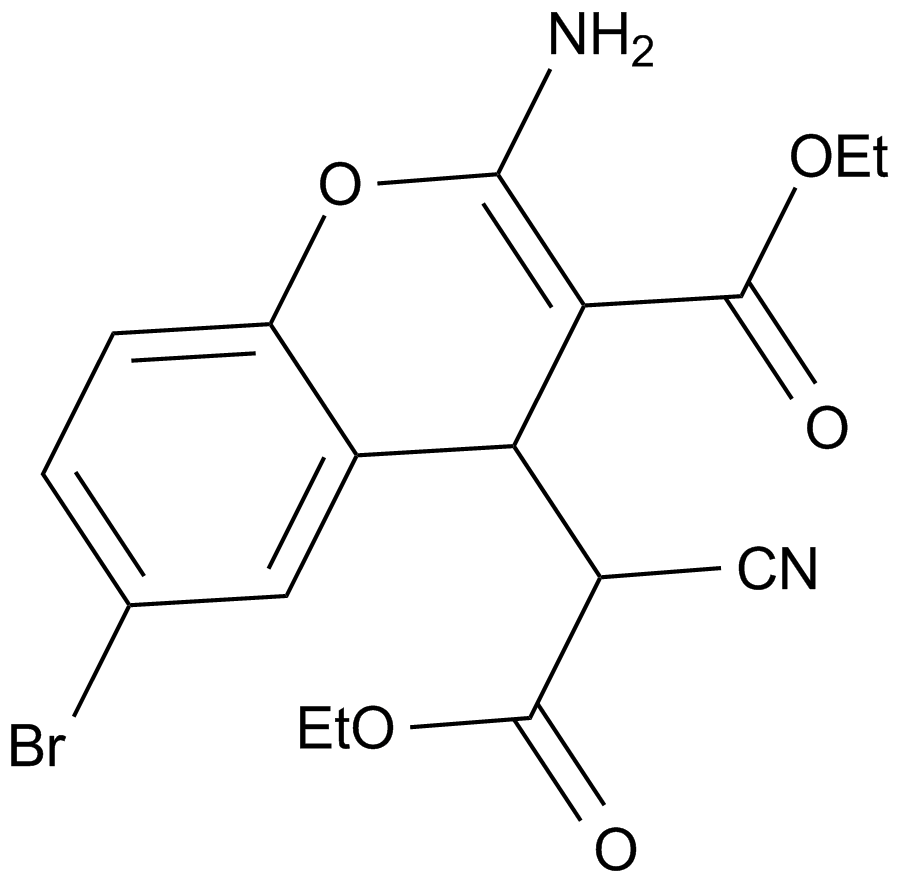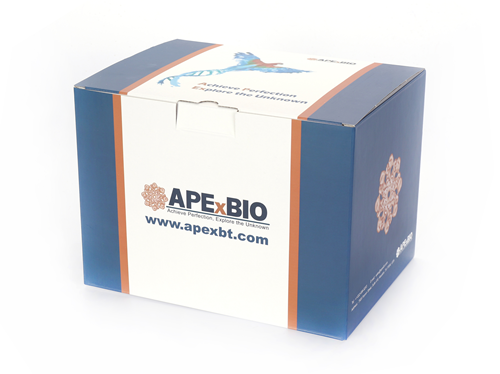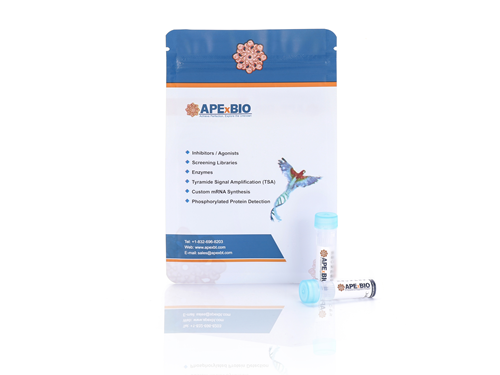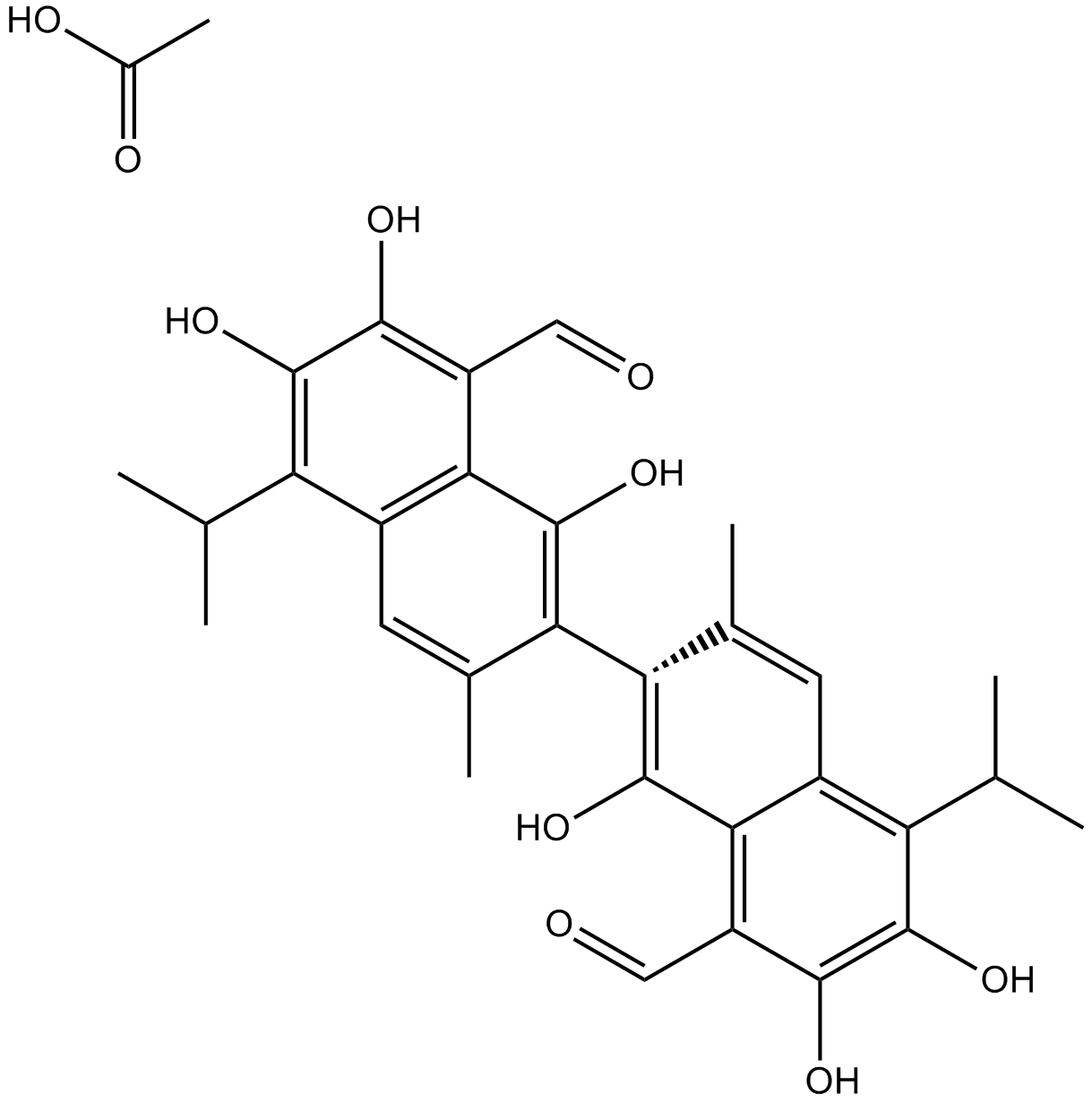ABT-737
ABT-737 (CAS 852808-04-9) is a small molecule inhibitor targeting the BCL-2 protein family, exhibiting high binding affinity toward the anti-apoptotic proteins BCL-2, BCL-X_L, and BCL-w. ABT-737 disrupts BCL-2/BAX protein interactions, leading to apoptosis primarily via the BAK-mediated intrinsic pathway, independent of BIM. In preclinical studies, ABT-737 demonstrated single-agent antitumor activity in lymphoma, multiple myeloma, and small-cell lung cancer models. Additionally, research indicates activity against acute myeloid leukemia (AML) cells, progenitor cells, and leukemia stem cells while sparing normal hematopoietic populations, highlighting its potential for therapeutic research in hematologic malignancies.
References
[1] Marina Konopleva, Rooha Contractor, Twee Tsao, Ismael Samudio, Peter P. Ruvolo, Shinichi Kitada, Xingming Deng, Dayong Zhai, Yue-Xi Shi, Thomas Sneed, Monique Verhaegen, Maria Soengas, Vivian R. Ruvolo, Teresa McQueen, Wendy D. Schober, Julie C. Watt, Tilahun Jiffar, Xiaoyang Ling, Frank C. Marini, David Harris, Martin Dietrich, Zeev Estrov, James McCubrey, W. Stratford May, John C. Reed, and Michael Andreeff. Mechanisms of apoptosis sensitivity and resistance to the BH3 mimetic ABT-737 in acute myeloid leukemia. Cancer Cell 2006: 10; 375-388
Suzanne Trudel, A. Keith Stewart, Zhihua Li, Yanjun Shu, Sheng-Ben Liang, Young Trieu, Donna Reece, Josh Paterson, Dingyan Wang, and Xiao-Yan Wen. The Bcl-2 family protein inhibitor,ABT-737, has substantial antimyeloma activity and shows synergistic effect with dexamethasone and melphalan. Clin Cancer Res 2007; 13 (2) 621-629
- 1. Nicholas W Harper, Gavin A Birdsall, et al. "RNA Pol II inhibition activates cell death independently from the loss of transcription." Cell. 2025 Aug 14:S0092-8674(25)00856-6 PMID: 40818455
- 2. Stefan Stoldt, Frederike Maass, et al. "Super-resolution microscopy of mitochondrial mRNAs." Nat Commun. 2025 Jul 10;16:6391 PMID: 40640125
- 3. Nicholas W. Harper, Gavin A. Birdsall et al. "Pol II degradation activates cell death independently from the loss of transcription." bioRxiv. 2025 Jan 14:2024.12.09.627542 PMID: 39713309
- 4. Louise E. King, Lukas Faber, Ana J. García-Sáez. "Activator of apoptosis harakiri (HRK) localisation at mitochondria alters mitochondrial morphology independently of other BCL‐2 proteins." The FEBS Journal 26 August 2025
- 5. Hannah Esser, Alastair Morris Kilpatrick, et al. "Primary cilia as a targetable node between biliary injury, senescence and regeneration in liver transplantation." J Hepatol. 2024 Jun 13:S0168-8278(24)02302-X PMID: 38879173
- 6. Sarah V Schweighofer, Daniel C Jans, et al. "Endogenous BAX and BAK form mosaic rings of variable size and composition on apoptotic mitochondria." Cell Death Differ. 2024 Apr;31(4):469-478 PMID: 38503846
- 7. Esmee Vringer, Rosalie Heilig, et al. "Mitochondrial outer membrane integrity regulates a ubiquitin-dependent NF-κB inflammatory response." EMBO J. 2024 Mar;43(6):904-930 PMID: 38337057
- 8. Sookil Tae, Hye Yeon Lee, et al. "Senolytic and Senomorphic Effects of Lactobacillus plantarum DS0037 Derived Exosome-like Nanovesicles." Journal of the Society of Cosmetic Scientists of Korea Volume 50 Issue 4 / Pages.335-348 / 2024 / 1226-2587(pISSN) / 2288-9507(eISSN)
- 9. Esther A Guzmán, Tara A Peterson, et al. "The Marine Natural Compound Dragmacidin D Selectively Induces Apoptosis in Triple-Negative Breast Cancer Spheroids." Mar Drugs. 2023 Dec 15;21(12):642 PMID: 38132962
- 10. Qilian Ma, Jiaqi Xin, et al. "UBQLN2 and HSP70 participate in Parkin‐mediated mitophagy by facilitating outer mitochondrial membrane rupture." EMBO Rep. 2023 Sep 6;24(9):e55859 PMID: 37501540
- 11. Bianca A. Romo. "Estrogen Receptor (ER) Alpha Regulatory Mechanisms and Therapeutic Strategies in ER+ Breast Cancer." Dartmouth College. October 09, 2023
- 12. Anna L. Koessinger, Catherine Cloix, et al. "Increased apoptotic sensitivity of glioblastoma enables therapeutic targeting by BH3-mimetics." Cell Death Differ. 2022 Oct;29(10):2089-2104 PMID: 35473984
- 13. Schwartz, Hannah, et al. "In vitro Methods to Better Evaluate Drug Responses in Cancer." UMass Chan Medical School. September 8, 2022
- 14. Hector Flores-Romero, Lisa Hohorst, et al. "BCL‐2‐family protein tBID can act as a BAX‐like effector of apoptosis." EMBO J. 2021 Dec 21;e108690 PMID: 34931711
- 15. Florian J Bock, Egor Sedov, et al. "Apoptotic stress-induced FGF signalling promotes non-cell autonomous resistance to cell death." Nat Commun. 2021 Nov 12;12(1):6572 PMID: 34772930
- 16. Kirsteen J. Campbell, Susan M. Mason, et al. "Breast cancer dependence on MCL-1 is due to its canonical anti-apoptotic function." Cell Death Differ. 2021 Sep;28(9):2589-2600 PMID: 33785871
- 17. Alexander-Floyd J, Haroon S, et al. "Unexpected cell type-dependent effects of autophagy on polyglutamine aggregation revealed by natural genetic variation in C. elegans." BMC Biol. 2020;18(1):18. Published 2020 Feb 24. doi:10.1186/s12915-020-0750-5 PMID: 32093691
- 18. Lee B, Min JA, et al. "A novel mechanism of irinotecan targeting MDM2 and Bcl-xL." Biochem Biophys Res Commun. 2019 Jun 25;514(2):518-523 PMID: 31056264
- 19. Thompson PJ, Shah A, et al. "Targeted Elimination of Senescent Beta Cells Prevents Type 1 Diabetes." Cell Metab. 2019 Feb 14. pii: S1550-4131(19)30021-X PMID: 30799288
- 20. Sheridan J.S. Carrington. "Differential Glycosylation of the Inwardly Rectifying Potassium Channel Kir7.1 by G protein-coupled Receptors." Vanderbilt University. 2019
- 21. Yochum ZA, Cades J, et al. "Targeting the EMT transcription factor TWIST1 overcomes resistance to EGFR inhibitors in EGFR-mutant non-small-cell lung cancer." Oncogene. 2018 Aug 31 PMID: 30171258
- 22. Jeong HJ, Ryu KJ, et al. "Anticancer agent ABT-737 possesses anti-atopic dermatitis activity via blockade of caspase-1 in atopic dermatitis in vitro and in vivo models." Immunopharmacol Immunotoxicol. 2018 Jun 29:1-8 PMID: 29957081
- 23. Kim HY, Jeong HJ, et al. "Anti-allergic and anti-inflammatory effects of the Bcl-2 inhibitor ABT-737 on experimental allergic rhinitis models." Eur J Pharmacol. 2018 May 30;833:34-43 PMID: 29856968
- 24. Cao Y, Chen M, et al. "The proton pump inhibitor pantoprazole disrupts protein degradation systems and sensitizes cancer cells to death under various stresses." Cell Death Dis. 2018 May 22;9(6):604 PMID: 29789637
- 25. Joel Riley, Giovanni Quarato, et al. "Activated BAX/BAK enable mitochondrial inner membrane permeabilisation and mtDNA release during cell death." bioRxiv. 2018 February 26
- 26. Giampazolias E, Zunino B, et al. "Mitochondrial permeabilization engages NF-κB-dependent anti-tumour activity under caspase deficiency." Nat Cell Biol. 2017 Sep;19(9):1116-1129 PMID: 28846096
- 27. Russo M, Milito A, et al. "CK2 and PI3K are direct molecular targets of quercetin in chronic lymphocytic leukaemia." Oncotarget. 2017 Jun 27;8(26):42571-42587 PMID: 28489572
- 28. Frevert, Marie Louise. "24 drugs as potential SKP2 Inhibitors: a novel approach to finding new antidepressants. Dissertation, LMU München: Medizinische Fakultät." d-nb.info. 2017
- 29. Xiang XY, Kang JS, et al. "SIRT3 participates in glucose metabolism interruption and apoptosis induced by BH3 mimetic S1 in ovarian cancer cells." Int J Oncol. 2016 Aug;49(2):773-84 PMID: 27277143
- 30. Kris Cameron Wood,Peter Saville Winter. "Compositions and Methods for Treating Cancer with JAK2 Activity." US Patent App. 15/027,216, 2016
- 31. Moriwaki, Kenta, et al. "The Mitochondrial Phosphatase PGAM5 Is Dispensable for Necroptosis but Promotes Inflammasome Activation in Macrophages." The Journal of Immunology (2015): 1501662 PMID: 26582950
- 32. Winter PS, et al. "RAS signaling promotes resistance to JAK inhibitors by suppressing BAD-mediated apoptosis." Sci Signal. 2014 Dec 23 PMID: 25538080
| Physical Appearance | A solid |
| Storage | Store at -20°C |
| M.Wt | 813.43 |
| Cas No. | 852808-04-9 |
| Formula | C42H45ClN6O5S2 |
| Synonyms | ABT 737, ABT737 |
| Solubility | ≥40.67 mg/mL in DMSO; insoluble in EtOH; insoluble in H2O |
| Chemical Name | 4-[4-[[2-(4-chlorophenyl)phenyl]methyl]piperazin-1-yl]-N-[4-[[(2R)-4-(dimethylamino)-1-phenylsulfanylbutan-2-yl]amino]-3-nitrophenyl]sulfonylbenzamide |
| SDF | Download SDF |
| Canonical SMILES | CN(C)CCC(CSC1=CC=CC=C1)NC2=C(C=C(C=C2)S(=O)(=O)NC(=O)C3=CC=C(C=C3)N4CCN(CC4)CC5=CC=CC=C5C6=CC=C(C=C6)Cl)[N+](=O)[O-] |
| Shipping Condition | Small Molecules with Blue Ice, Modified Nucleotides with Dry Ice. |
| General tips | We do not recommend long-term storage for the solution, please use it up soon. |
| Cell experiment: | |
|
Cell lines |
Small-cell lung cancer (SCLC) cell (NCI-H889, NCI-H1963, NCI-H1417, NCI-H146, NCI-187, DMS79, NCI-1048, NCI-H82, NCI-H196, H69AR, and DMS114) lines. |
|
Preparation method |
The solubility of this compound in DMSO is >10 mM. General tips for obtaining a higher concentration: Please warm the tube at 37 °C for 10 minutes and/or shake it in the ultrasonic bath for a while.Stock solution can be stored below -20°C for several months. |
|
Reaction Conditions |
48 h; 10 μM |
|
Applications |
The ability of ABT-737 to inhibit cell proliferation with single-agent activity was evaluated against a panel of 11 kinds of SCLC cell lines. Ac-DEVD-AMC, a substrate for activated caspase 3, was used to treatment of H146 cells for 24 h. A dose-dependent increase in apoptosis coincided with a dose-dependent decrease in cell viability following ABT-737 treatment suggesting that ABT-737 inhibits cell proliferation through the induction of apoptosis. |
| Animal experiment: | |
|
Animal models |
Lymphoma-prone Eμ- myc transgenic mice |
|
Dosage form |
75 mg/kg body weight; the tail injection. |
|
Applications |
All B-lymphoid subsets in the ABT-737-treatment (75 mg/kg) cohort were significantly decreased, compared with the vehicle-treated animals, in both the bone marrow and the spleen. Eμ- myc animals treated with ABT-737 contained significantly (**P |
|
Other notes |
Please test the solubility of all compounds indoor, and the actual solubility may slightly differ with the theoretical value. This is caused by an experimental system error and it is normal. |
|
References: [1] Tahir S K, Yang X, Anderson M G, et al. Influence of Bcl-2 family members on the cellular response of small-cell lung cancer cell lines to ABT-737[J]. Cancer research, 2007, 67(3): 1176-1183. [2] Kelly P N, Grabow S, Delbridge A R D, et al. Prophylactic treatment with the BH3 mimetic ABT-737 impedes Myc-driven lymphomagenesis in mice[J]. Cell Death & Differentiation, 2012, 20(1): 57-63. |
|
| ABT-737 is a BH3 mimetic inhibitor of Bcl-xL, Bcl-2 and Bcl-w with EC50 of 78.7 nM, 30.3 nM and 197.8 nM, respectively; no inhibition observed against Mcl-1, Bcl-B or Bfl-1. | ||||||
| Targets | Bcl-xL | Bcl-2 | Bcl-w | |||
| IC50 | 78.7 nM (EC50) | 30.3 nM (EC50) | 197.8 nM (EC50) | |||
Quality Control & MSDS
- View current batch:
Chemical structure
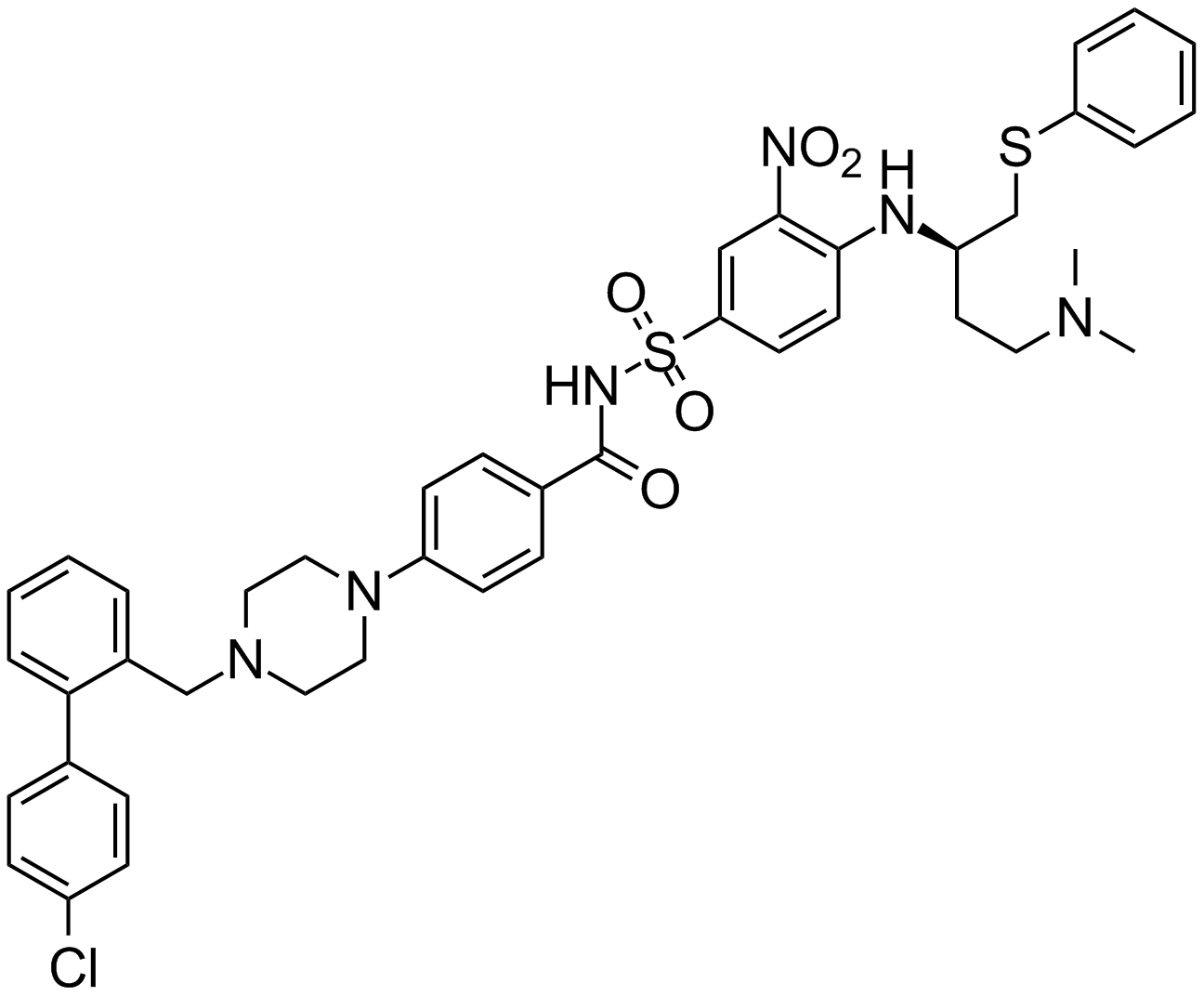
Related Biological Data
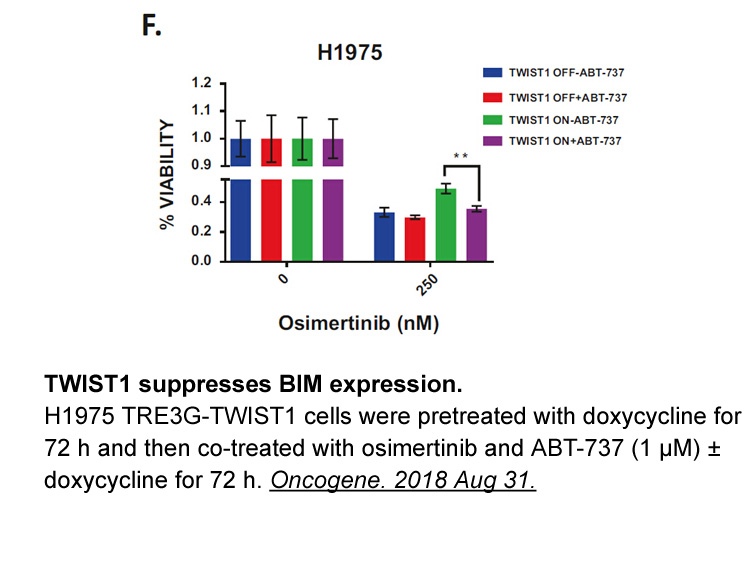
Related Biological Data
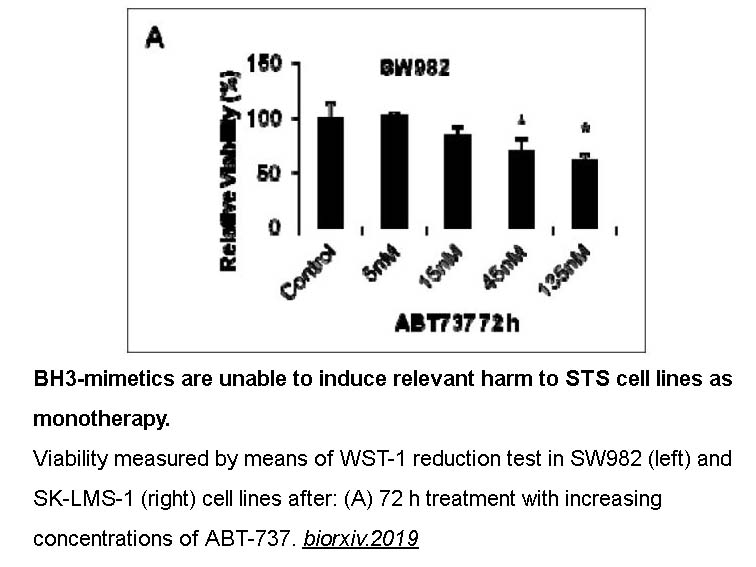
Related Biological Data
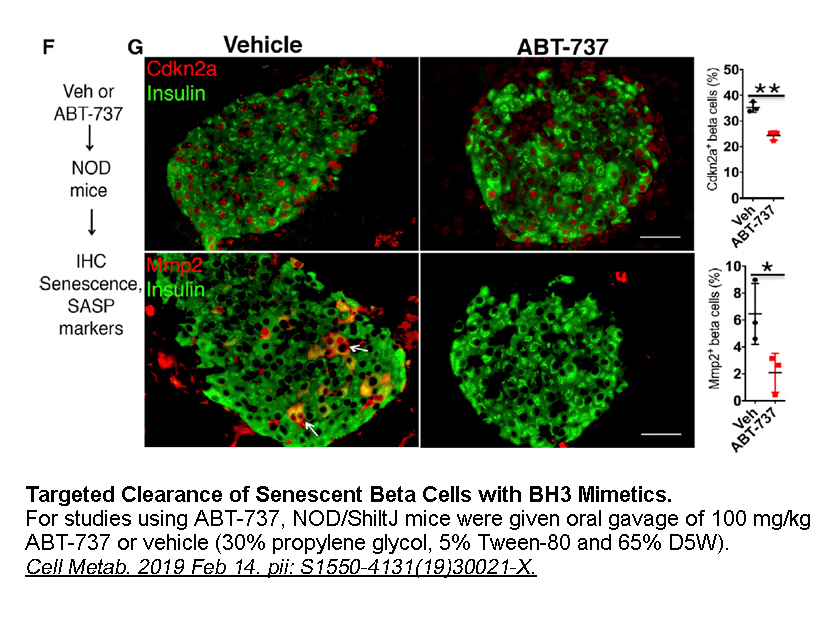
Related Biological Data
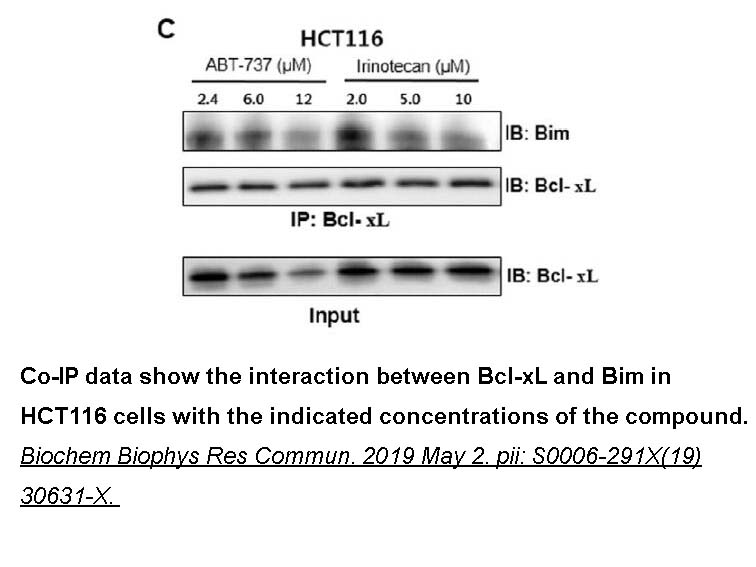
Related Biological Data
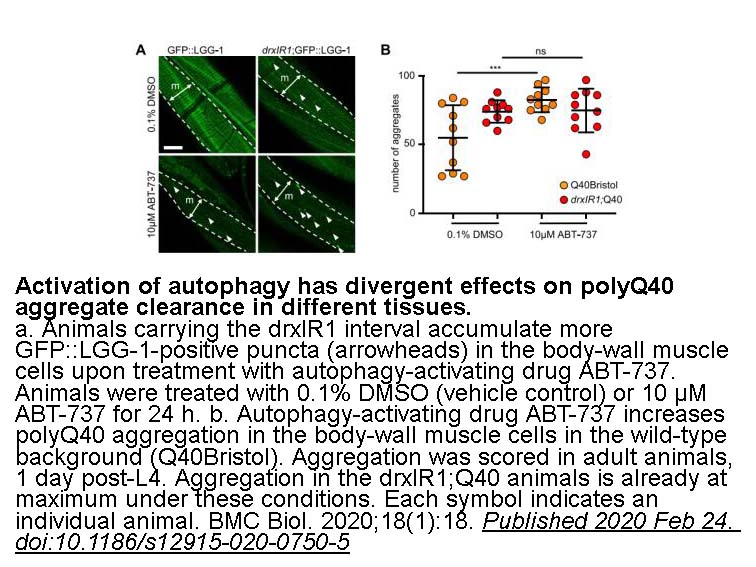
Related Biological Data
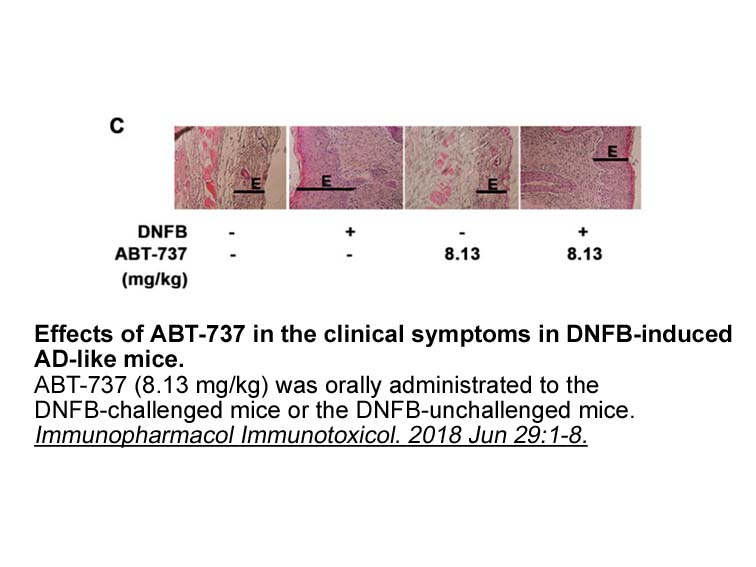
Related Biological Data
